History of Znamenny Chant
Prior to 1600, the chant manuscripts of the Russian Orthodox Church consisted solely of neumes and text, with no system of indicating scale pitches. In addition, scholars are not sure just when the theory of a musical scale originated among the Russians. Each of the four periods of Russian musical theory has particular developments that helped shape the Znamenny Chant into what we have today.
First Period (late 10th Century to c. 1500)
The origins of the Neumes are well known. The Chant manuscripts were brought into Russia by Byzantine missionaries and travelers (some from Mount Athos), and the system of middle Byzantine notation classified as the Coislin System is precisely that which forms the basis of early Russian neumatic notation. Several conclusions can be made with almost undisputable certainty: the chant notation in the First Period of Russian notation is one and the same as the corresponding Byzantine chant notation from which it is derived; the chant melodies of the Slavonic translations of the Greek texts are very close to the corresponding Byzantine melodies.
Certainly the concept of a scale theory existed in the Byzantine system of chanting, but it differs markedly from the Znamenny Chant scale as has been preserved by the Russian Church. In addition, musicologists are not completely in agreement as to the accuracy of the findings. Present research and knowledge of the scale theory of the corresponding Byzantine-Slavic chant manuscripts from the First and Second Periods are even more perplexing. The concept of analyzing the musical scales and preserving the knowledge in written form was apparently not of interest to early church musicians. The need for accurate notation and pitch did not seem to constitute part of their musical or scientific sensitivity. The melodies were committed to memory and the only purpose of the neumes was to provide a general reminder to the chanters of the shape of the melody. To aid the chanter in the memorization process, some of the neumes had particular functions of indicating direction of the pitches (such as up or down).
Second Period (c. 1500 to c. 1600)
During the middle to late 1500’s, a system of Symbols emerged, which aided the chanter in singing. These symbols were of two types: 1. Tonal Range Symbols, which suggest the vocal range (low, medium, high), and how many strokes accompany certain neumes; and 2. Special Symbols, in black ink, which indicate various inflections of the neumes, such as shortening of lengthening of a sound.
Third Period (c. 1600 to c. 1660)
It is in the Third Period, beginning with the notational reforms of Ivan Shaidurov, that we are able to decipher the chant manuscripts with greater certainty. Ivan Shaidurov was a learned monk familiar with Renaissance music of Western Europe, who utilized some of the musical terminology borrowed from the Latin culture. Shaidurov is credited with two major developments of the notations system of Znamenny Chant:
- He codified the scale system of the Great Russian Znamenny Chant by firmly establishing the number of pitches in the scale as twelve. The Pitch Marks are represented by a “ladder”, beginning with a low range of three pitches (Low UT, Low RE, and Low MI,), a middle range of six pitches (UT, RE, MI, FA, SOL, LyA), and a high range of three pitches (High FA, High SOL, and High LyA).
- Shaidurov also introduced a system of Cinnabar (red ink) marks placed together with the black Neumes. Thee red marks are of two kinds: a. Pitch Marks for indicating the pitch of the scale, and b. Indicating Marks for indicating qualitative and qualitative inflections of the neumes.
Fourth Period (c. 1660 to the present)
In 1656, Patriarch Nikon began instituting a sweeping program of reforms to the structure of the Russian Orthodox Church. The texts of the service books were altered, liturgical practices were changed, the custom of making the sign of the Cross was changed, etc. Following his textual reforms, Patriarch Nikon formed a musical commission in the 1660’s to address the need for updating the musical chant manuscripts to the newer texts. Under his direction, the neumatic notational system was reformed and refined by introducing a third group of Symbols – the Auxiliary Pitch Marks, which further clarified the pitches in conjunction with the tonal range signs. He also instituted a number of stylistic and orthographic differences in the notation.
The use of the reformed/revised notations (Idiomatic Singing) has been accepted by the Priested Old Believers, although the reformed texts were rejected. The Priestless Old Believers and the Orthodox Old Ritualists of Erie, Pennsylvania still preserve the old (Third Period) chants and the ancient Russian vocal practices, rejecting whenever possible, the newer manuscripts as innovations to their medieval heritage.
The new changes to the music spread from Moscow throughout much of Russia, almost replacing the entire tradition of the Russian/Byzantine Chant. A few isolated regions and monasteries continued to preserve the variants of the Znamenny Chant up to the 1917 revolution.
Another reason the new style of chanting caught on in Russia is due to the problems of reproducing the musical chant books. Prior to Nikon’s reforms, all chant books were in manuscript form. Scribes were required to copy books manually. No attempts at mass printing the chant books in neumatic notation were attempted, as the process was beyond the capability of early printing presses. Thus, the new system of notation is used to this day by the State Church, or “official” Russian Church.

